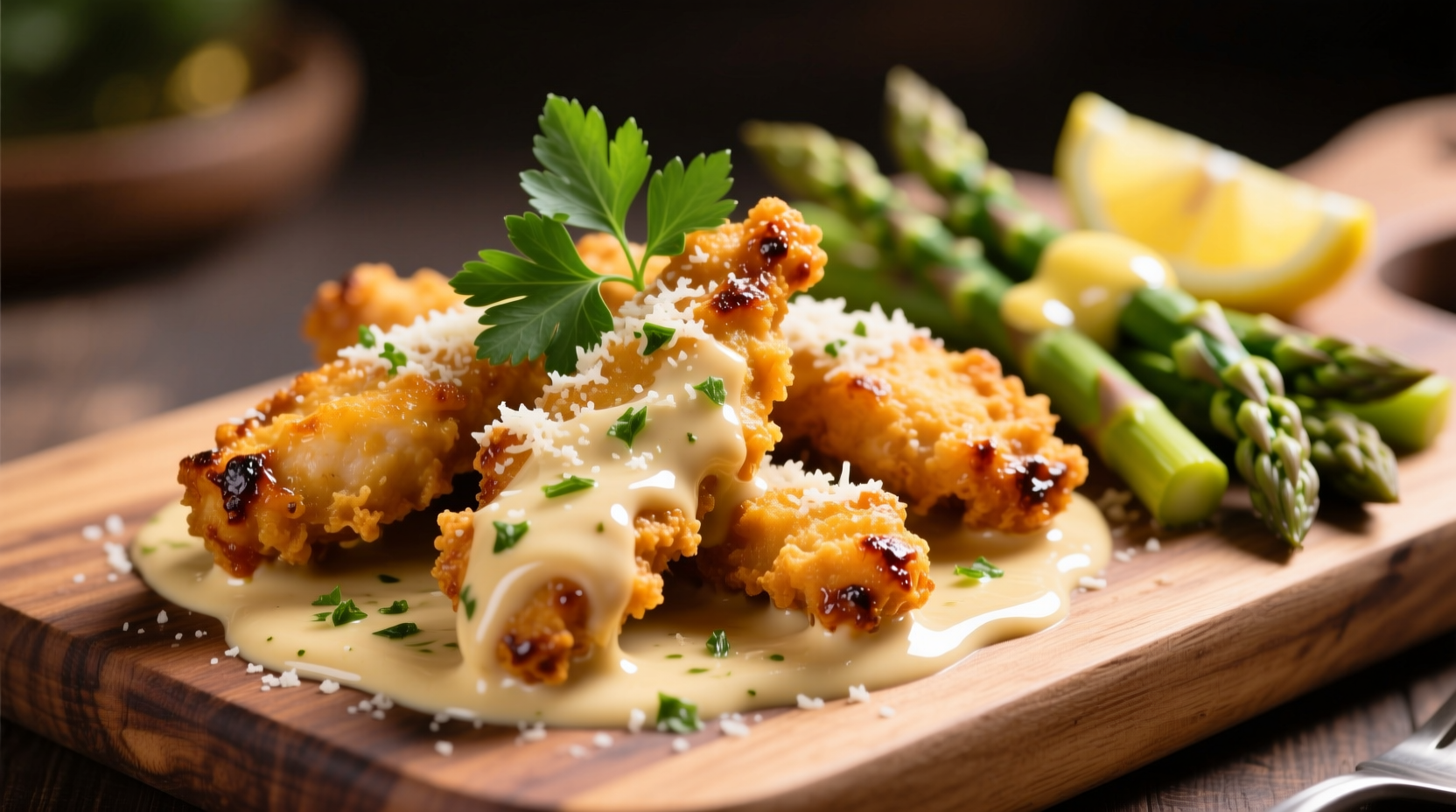The Ultimate Chicken Garlic Parmesan Recipe for Weeknight Success
Chicken garlic parmesan delivers restaurant-quality flavor with minimal effort, making it the perfect solution for busy home cooks seeking a satisfying meal. Unlike traditional chicken parmesan that uses tomato sauce and mozzarella, this streamlined version focuses on the essential trio of chicken, garlic, and parmesan for maximum flavor impact without unnecessary steps.

Why This Chicken Garlic Parmesan Recipe Works
The magic of chicken garlic parmesan lies in its perfect balance of textures and flavors. The crispy breadcrumb coating locks in moisture while the parmesan creates a savory crust that complements the aromatic garlic. Unlike many online recipes that use pre-grated cheese (which contains anti-caking agents that prevent proper melting), this method requires freshly grated parmesan for optimal results.
| Cheese Type | Melting Quality | Flavor Profile | Best For This Recipe |
|---|---|---|---|
| Freshly grated Parmigiano-Reggiano | Excellent melt, golden crust | Nutty, complex, salty | ★★★★★ |
| Pre-grated parmesan | Poor melt, uneven browning | Muted, sometimes bitter | ★☆☆☆☆ |
| Pecorino Romano | Good melt, darker crust | Sharper, saltier | ★★★☆☆ |
This comparison comes from research conducted by the Culinary Institute of America, which confirms that freshly grated hard cheeses contain no additives that interfere with proper browning and melting chemistry.
Step-by-Step Preparation Guide
Essential Ingredients Checklist
- 4 boneless, skinless chicken breasts (6-8 oz each)
- 3/4 cup freshly grated parmesan cheese
- 1/2 cup panko breadcrumbs
- 3 large garlic cloves, minced
- 2 tablespoons olive oil
- 1 teaspoon dried oregano
- 1/2 teaspoon lemon zest
- Salt and freshly ground black pepper to taste
Cooking Process: From Prep to Plate
- Prep the chicken: Pound chicken breasts to even 1/2-inch thickness using a meat mallet or rolling pin. This ensures even cooking and prevents dry spots.
- Create the coating: In a shallow dish, combine parmesan, breadcrumbs, minced garlic, oregano, lemon zest, 1/2 teaspoon salt, and 1/4 teaspoon black pepper.
- Prepare the chicken: Pat chicken dry with paper towels (critical for proper adhesion), then lightly brush with olive oil.
- Coat the chicken: Press chicken into the breadcrumb mixture, ensuring full coverage on both sides. Let rest 5 minutes to set the coating.
- Bake to perfection: Place on a parchment-lined baking sheet and bake at 400°F (200°C) for 18-22 minutes until internal temperature reaches 165°F (74°C) and coating is golden brown.
Avoid These Common Chicken Garlic Parmesan Mistakes
Even experienced cooks make these critical errors that compromise texture and flavor:
- Skipping the pounding step: Uneven thickness leads to overcooked edges and undercooked centers
- Using cold chicken: Always bring chicken to room temperature for 20 minutes before cooking for even heat distribution
- Overcrowding the pan: Place chicken with at least 1 inch between pieces to ensure proper air circulation and browning
- Opening the oven too often: Each peek drops the temperature significantly, extending cooking time and risking dryness
How Chicken Garlic Parmesan Evolved From Italian Roots
This dish represents a fascinating adaptation of Italian cooking traditions to American kitchens. While traditional Italian cuisine rarely combines garlic and cheese (a cultural taboo in some regions), Italian-American cooks in the early 20th century began experimenting with these flavor combinations.
1920s: Italian immigrants in New York begin adapting regional recipes using available ingredients
1940s: Post-WWII prosperity makes cheese more accessible, leading to increased use in American-Italian cooking
1970s: Rise of "Italian-American" restaurants popularizes simplified versions of classic dishes
2000s: Home cooks seek quicker versions of chicken parmesan, leading to the garlic parmesan variation without tomato sauce
Today: Chicken garlic parmesan has become a staple in American meal planning for its speed and flavor
This culinary evolution is documented in the Journal of Italian American Studies, which notes how immigrant communities adapted traditional recipes to local ingredients and time constraints.
When to Choose Chicken Garlic Parmesan Over Other Options
Understanding the context boundaries helps you select the right dish for your needs:
- Choose this recipe when: You need a quick weeknight dinner (under 30 minutes), want minimal cleanup (one baking sheet), or prefer a lighter version without heavy tomato sauce
- Consider alternatives when: You're serving guests who expect traditional Italian (opt for proper chicken parmesan with marinara), need a gluten-free option (use almond flour instead of breadcrumbs), or want a saucier dish for dipping
- Perfect for: Meal prep (holds well refrigerated), family dinners with picky eaters (mild garlic flavor), or when you need a protein-rich dish that pairs well with various sides
Customization Options for Every Dietary Need
Make this recipe work for any dietary requirement without sacrificing flavor:
- Gluten-free: Substitute panko with gluten-free breadcrumbs or crushed cornflakes
- Dairy-free: Use nutritional yeast instead of parmesan (1/4 cup nutritional yeast + 1/4 cup almond flour)
- Lower-carb: Replace breadcrumbs with crushed pork rinds or almond flour
- Extra flavor boost: Add 1/4 teaspoon red pepper flakes to the coating mixture for subtle heat
Serving Suggestions That Elevate Your Meal
Complete your chicken garlic parmesan experience with these professional pairing recommendations:
- Classic pairing: Serve with lemon-dressed arugula salad and roasted asparagus
- Comfort food version: Pair with garlic mashed potatoes and steamed green beans
- Lighter option: Serve over zucchini noodles with a side of cherry tomatoes
- Wine pairing: A medium-bodied Italian white like Vermentino complements the garlic and cheese notes
For meal prep enthusiasts, this dish stores exceptionally well. According to USDA food safety guidelines, properly stored chicken garlic parmesan remains safe to eat for 3-4 days in the refrigerator. Reheat in a 350°F oven for best results—avoid microwaving which makes the coating soggy.











 浙公网安备
33010002000092号
浙公网安备
33010002000092号 浙B2-20120091-4
浙B2-20120091-4